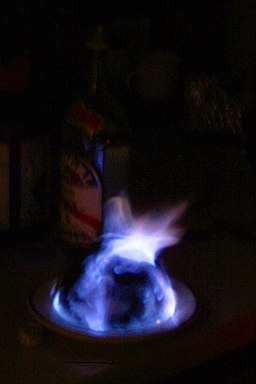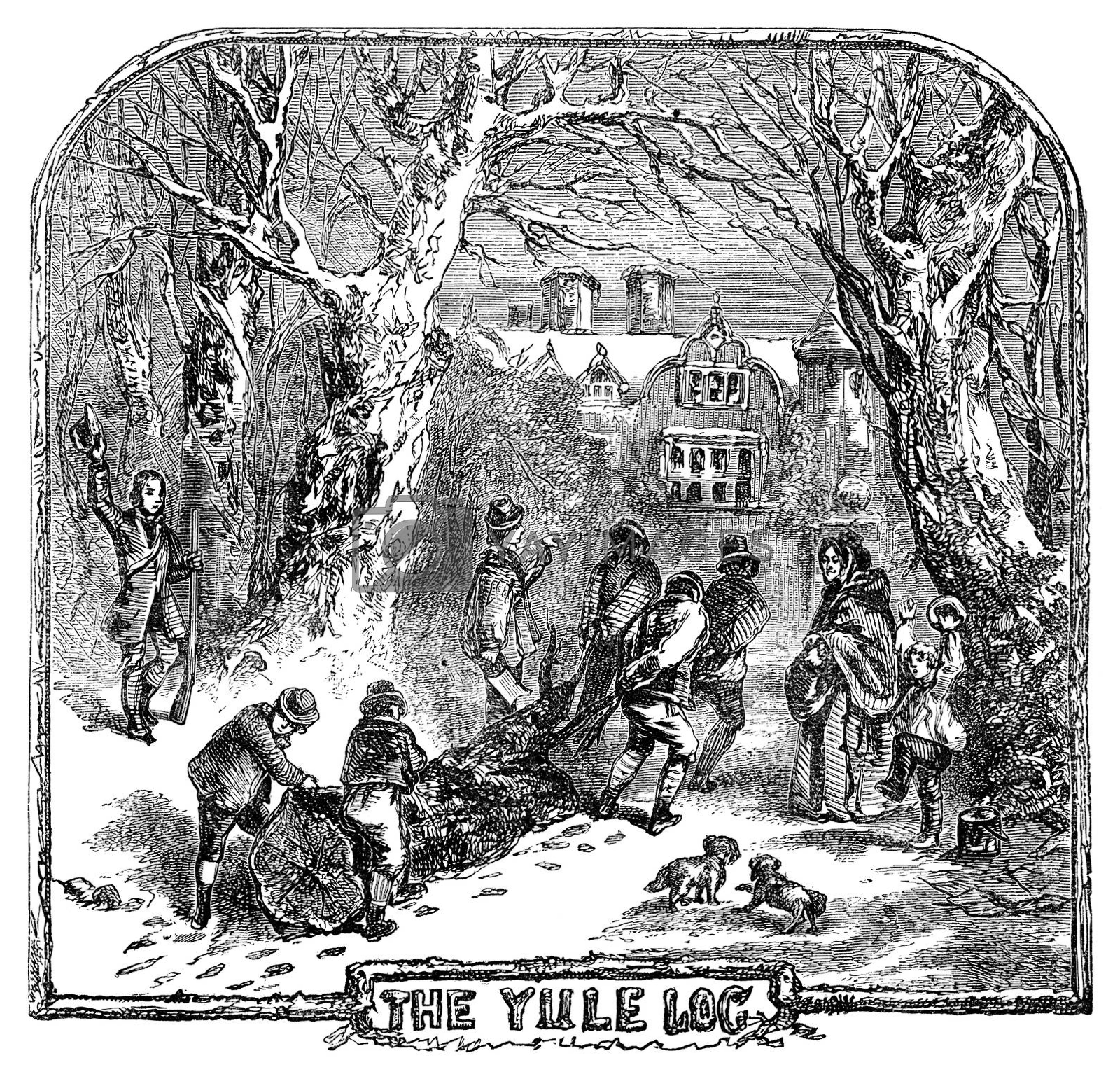Regency Christmas Traditions: Deck the Halls

A full month of posts to celebrate the Christmastide season. Stories, traditions, recipes, videos, games and a giveaway to fill your Yuletide with Regency Era fun.
Families put up decorations and greenery throughout the house on Christmas Eve, usually not before. Traditional greenery included holly, ivy, rosemary, evergreen, hawthorn, laurel, and hellebore (Christmas rose). Boughs, garlands and sprigs decorated windows, tables, mantles and stairways with the scents and colors of the season. For those who could not go out and cut their own, greenery could be purchased for the season.
Some households fashioned kissing boughs from evergreens and mistletoe, adding apples and pretty ribbon bows for decoration. Young men might ‘steal’ a kiss beneath the kissing bow and pluck a mistletoe berry for each stolen kiss. When the berries were gone, no more kisses could be stolen. Oftentimes though, the mistress of the house relegated these particular decorations below stairs, inappropriate for proper company.
The greenery remained in place until Twelfth Night when it was removed and burned lest it bring bad luck to the house.
Regency Holiday Lights
Twinkling lights are an iconic emblem of the holiday season and one of my very favorites. I love to turn off all the lights and enjoy the flicker of candle light or the glow of the Christmas tree light. Even before the Christmas tree was widely in vogue, the Regency Christmastide season had its own array of holiday lights.
Yule Log
The Yule log is perhaps the best known of the traditional holiday lights. The Yule Log, an enormous log of freshly cut wood, would be gathered by teams of farmhands and hauled to the house with great ceremony and merriment. Once on the hearth, the log might be anointed with oil, salt and wine, with suitable prayers made. The log was lit on Christmas Eve with splinters saved from the log from the previous year. The fire was to last at least until the end of Christmas Day and was kept smoldering until Twelfth Night. The Yule Log was believed to bring prosperity and protection from evil. Families kept a remnant of the log all the year long so protection would remain across the seasons. Even the ashes were believed to hold power. They would be scattered over fields to promote fertility.
Christmas or Yule Candle
At the end of the 18th century, it became the custom for chandlers and other merchants to present regular customers with the gift of a large candle at Christmas. This Yule candle would be lit at sunset on Christmas Eve and burn until Christmas service (or dawn) the next day. Traditional superstitions said that dire consequences, ill fortune or even the death of a family member, would ensue if the candle should burn out too soon, that is before Christmas morning. Typically the Yule Candle would be place at the dining table and lit a sunset by the head of the household who would also be the one to extinguish it, should that be necessary.
Once lit, it was not to be moved nor any other candle lit from its flame. Christmas Eve supper was served in the light of the Yule Candle. To prevent bad luck, an even number of people had to sit down to the meal and all leave at the same time after the meal ended. Servants might be pressed to join the family at the table to ensure a desirable number of diners.
The light of the Yule Candle was thought to convey special blessings to anyone touched by it. Holiday breads were stacked around it, so they would be kept fresh by its light. Precious possessions might also be place within its glow so that they might be protected from harm. The stub of the Yule Candle and any drippings were also thought to offer protection and healing. The wax might be used on cuts and sores or to mark the backs of farm animals to ensure their health and productivity in the coming year.
Candles in the widow
By the start of the 19th century, candles flickering in the windows were a symbol of charity and good will. Groups of working class men and women would go house to house looking for those with a candle in the window to signal they were welcome. If welcomed, they would sing and often receive coins, wassail, and food for their efforts. During the Regency, groups of carolers from the local village often ended their evening of caroling at the local land owners manor house. Typically they would sing for the family and be treated to victuals and libations (frequently in the form of wassail) and a warm fire. Candles and small oil lamp often lit the windows of confectioners shops displaying Twelfth Night cakes during Christmastide. The cakes were elaborate creations with sugar frosting, gilded paper trimmings, and sometimes delicate plaster of Paris or sugar paste figures. In towns, confectioners would place these cakes in their shop windows so the displays could be admired during winter evenings.

The last Sunday in November was known as Stir Up Sunday, the day for plum puddings to be made. All the family participated in making the plum puddings, stirring up the13 ingredients (to represent Christ and the 12 apostles) with a special wooden spoon (in honor of Christ’s crib). After the family stirred the pudding, tiny charms might be added to the pudding to reveal their finders’ fortune. The trinkets often included a thimble (for spinsterhood or thrift), a ring (for marriage), a coin (for wealth), a miniature horseshoe or a tiny wishbone for good luck, and an anchor for safe harbor. (Read a Stir it Up Sunday scene here.)
The pudding was steamed in a cloth bag, then hung up to age until Christmas Day. When served, a sprig of holly was placed on the top of the pudding as a reminder of Jesus’ Crown of Thorns that he wore when he was killed. It was then doused with brandy and lit. A portion of the pudding was saved for New Years to assure good luck.

Snapdragon
Snapdragon is a parlor game. Raisins were piled in a bowl, topped with brandy and lit on fire. Players would try to snatch raisins out of the blue brandy-flames and eat them without getting burned—or lighting anything else aflame. While brandy burns with a relatively cool flame, I’m not sure I would suggest this for the next family Christmas party. Though my sons would very much like to try it, this mom is not convinced it is a good idea!
References
Ayto, John. An A-Z of Food & Drink. Oxford University Press:Oxford. 2002
Broomfield, Andrea. Food and Cooking in Victorian England: A History. Praeger:Westport CT. 2007
Davidson,Alan . Oxford Companion to Food, Oxford University Press:Oxford. 2000
Glasse, Hannah .The Art of Cookery made plain and easy, 1784.
Godey’s Lady’s Book, Dec. 1860
Griffen ,Robert H. and Ann H. Shurgin editors. The Folklore of World Holidays,Second Edition. Gale:Detroit.1998
Knightly, Charles. The Customs and Ceremonies of Britain. London:Thames and Hudson. 1986
Revel ,Rachel. Winter Evening Pastimes or The Merry Maker’s Companion. 1825
Yule Log
The Yule Candle in the Regency
If you enjoyed this post you might also enjoy:


The burning brandy flame in Snapdragon reminds me of the plum pudding my mother used to serve on Christmas – an odd tradition, now that I think of it, since we’re Jewish. But when it comes to food, we are very, very ecumenical! I’m open to ALL traditions! I sometimes make mulled wine, where I light some brandy and sugar on fire before adding it to the wine. I’ve never been burned, but I’m terrified every single time!
Really enjoyed reading about Christmas customs in Regency
England and how much we still do and thank you for the giveaway.
What a delightful article. I am very tempted to try Snapdragon myself although I fear the local fire brigade would soon be in attendance!
I would rather drink the brandy than burn it! Thank you for sharing this information – very interesting article.
I have read of the Yule log many times and have read of the game Snapdragon in a few JAFF books. I love the photo with the hanging Kissing Bough. I have never tasted much less seen a plum pudding but have wondered about its taste. Here in the Lehigh Valley PA candles (electric) in the windows is a long standing tradition. And we have a Moravian Star which sits above Bethlehem to guide Wise Men to the creche. (Truly and it becomes a cross at during Lent.) It sits high on a mountain and can be seem from the north and the south as one approaches the city. There are also Moravian Stars we hang from porches, windows and place on our trees. (Big Business.) I have a friend whose husband comes from Austria and they place real candles on their tree and invite friends over for the lighting of such (with buckets of water nearby).
Happy Christmas to all.
My pyromaniac boybarians would *love* to play Snapdragon, but, like you, I think we’ll pass. 😉 (What is it with boys and flames? They are constantly passing their fingers through the flames of the Advent candles…and they are 16, 18, and 20 years old!)
This last Saturday, our church had a Christmas brunch and wreath-making with all kinds of greenery. Since I’m craft-impaired, I settled for a nice bunch of rosemary, holly, and fir tied with purple and gold ribbons for Advent. I’ll save it for burning on Twelfth Night with the Anglican church I attend on Fridays…minus the decorations.
Thanks for all of these lovely traditions; I so enjoyed reading about them!
Warmly,
Susanne 🙂
I love reading all the Christmas time traditions. I keep thinking of snapdragon especially since I just read a JAFF story mentioning it.
This was so interesting to me learning about the regency traditions! Thanks for doing the giveaway!!
I have always loved the idea of the yule log, if I had a fireplace I would definitely do this tradition. Not sure plum pudding would be something I could do, I am not patient LOL! I love the traditions and I wish that we had those kinds of traditions today, they brought people together and made the holidays amazing. Now everyone is too busy to stop and enjoy it.
Pingback:Christmas History A'la Carte12-10-15 - Random Bits of Fascination
Pingback:Pride and Prejudice Christmas Scene: Miss Darcy and the Kissing Ball - Random Bits of Fascination
Pingback:Regency Traditions Video: Make Your Own Kissing Ball - Random Bits of Fascination
I don’t know if my previous message got through. These traditions are interesting.
Pingback:Regency Traditions Video: Mistletoe and Kissing Bough - Random Bits of Fascination
interesting traditions
Pingback:Regency Christmas Traditions: Traditional Celebration Days - Random Bits of Fascination
I do not understand how they played Snapdragon but would love to try! I truly love the picture of the kissing bough – just lovely. Thank you for the giveaways.
Pingback:Regency Christmas Traditions: Christmas Eve, Christmas and Boxing Day - Random Bits of Fascination
Pingback:Pride and Prejudice Christmas Scene: Elizabeth's first Yule Log - Random Bits of Fascination
Thankyou for educating me about the Yule log, I had no idea. I think my sons would love to try that snapdragon game. 🙂